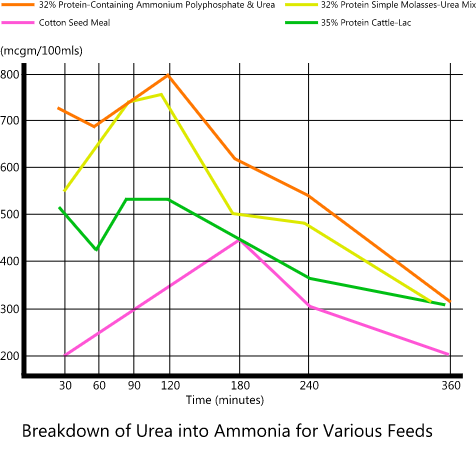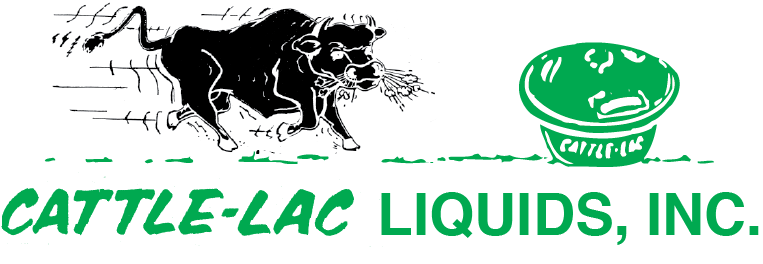Ruminants (cows) may be fed UREA as a substitute for protein because microorganisms (bacteria & protozoa) convert UREA to protein.
Urea is Non-Protein Nitrogen
Whenever you feed an all-natural feed, your cattle are getting some NPN. For example, corn protein is 4% NPN, alfalfa protein is 10-20% NPN and corn silage protein is 50% NPN. Although no NPN is added to the diet, some NPN is certain to be consumed. This proves that the addition of NPN to ruminant diets is not as drastic a change in nutrient composition as we are led to believe.
Urea Breakdown
The majority of the protein entering the rumen is broken down into ammonia. Research has demonstrated rumen bacteria actually have an ammonia requirement. Some natural proteins & UREA protein are broken down by rumen bacteria to ammonia before they can be utilized. All nitrogenous materials entering the rumen are converted first to ammonia and then the ammonia is used by the microorganisms for the synthesis of protein. Excess ammonia is absorbed from the rumen into the blood stream. Then the blood system transports the ammonia to the liver where it is converted in UREA. UREA leaves the liver to enter the kidney for excretion.

Urea into Ammonia for Feeds
If the appropriate conditions exist in the rumen, the microorganisms will utilize the ammonia broken down from UREA and manufacture a high-quality microbial protein. It then passes down the digestive tract for absorption in the small intestine.
The Necessity of Urea with Less Soluble (By-Pass) Proteins
Increased Performance
If nearly all of the ingested by-pass protein passes out of the rumen intact, little if any ammonia nitrogen would be available to the rumen microbes for the manufacture of microbial protein. Thus, it is important that some highly degradable source of nitrogen, such as UREA be fed in combination with slowly degradable proteins to meet the ammonia requirement of the rumen microbes. Without this NPN, the breakdown of fiber in the rumen would be decreased greatly, as would overall performance of the cow.
Increased Microbial Activity
As bypass protein is increased, more UREA can be fed to the animal to supply ammonia for maximum rumen function and microbial protein synthesis.
Toxin Excretion
Excess UREA (i.e.: 28, 29, 30 or 31% NPN in a 32% feed) may become toxic and kill the animal. Normally it is lost in the form of urine and enters the ground as fertilizer.
What is the advantage to slow release urea?
Oklahoma State University research shows that the theory of slow-release (controlled or regulated) UREA to improve ruminal digestion and enhance animal performance remains to be validated. Slow-release UREA is simply a way to CONTROL TOXICITY. Some is tied up in the feed and is not available to the animal and passes through the urine to the ground. IT NOW BECOMES A VERY EXPENSIVE FERTILIZER!!
More Efficient Feed
Rations containing natural protein and UREA are usually more nutritionally adequate than rations containing either natural protein or UREA alone. CATTLE-LAC represents a very efficient way to feed UREA because:
- It tends to lower the rate of UREA breakdown
- It provides readily available carbohydrates (carbon skeleton) for rumen bacteria
- It furnishes natural protein and UREA.
Natural Protein Conversion
CATTLE-LAC feeds the bacteria in the rumen that in turn feeds the cow. The natural protein in CATTLE-LAC aids in the correction of nitrogen starvation to rumen microorganisms. CATTLE-LAC is broken down into ammonia more slowly than UREA and provides nitrogen to rumen bacteria over a longer period of time (see chart). CATTLE-LAC fed cows, in contrast to molasses-UREA fed cows, are given a dietary balance sufficient to maximize rumen digestion.
